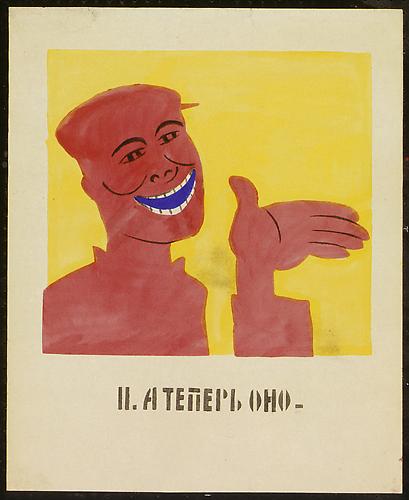The Rosta windows are the first Soviet propaganda posters published by the Russian telegraph agency ‘Rosta’ between September 1919 and February 1922 under the supervision of Vladimir Mayakovsky.
The Rosta windows dealt with political, military and economic themes and were displayed in the shop windows of Moscow. Rather than printed posters in the conventional sense, they were hand-painted by some of the most prominent Russian avant-garde artists of the time.
Vladimir Mayakovsky was one of the first Russian artists to devote themselves to the revolution and one of the most committed to it. He saw the political and artistic
revolution in the years following 1917 as being one inextricable unit. Mayakovsky
described the Rosta windows as “a nation of 150 million being served by hand by a
small group of painters”. He was responsible for creating roughly 9/10 of the texts. He was also instrumental in shaping the bold, stark-coloured, laconic yet dynamic forms used in the funny, but often grotesque and folksy drawings in a marriage of political potency and modern imagery.








